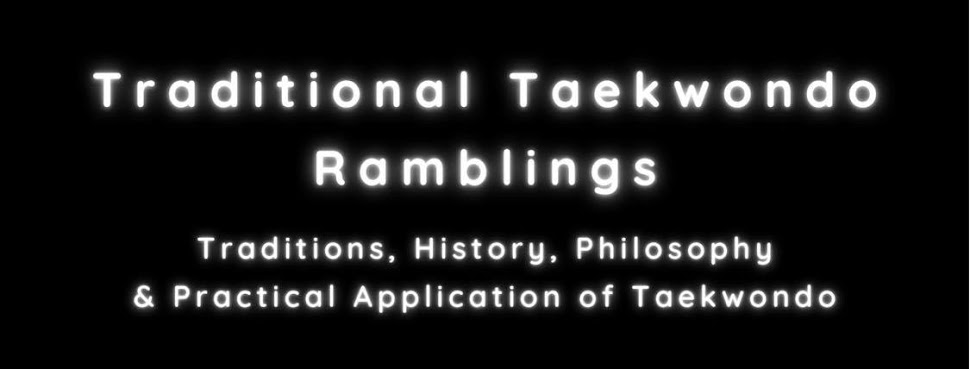I have written a little about Kihap before on this blog, but something that happened last training session really made me want to write a little about Kihap in Poomsae. You see what happened was that we were doing Poomsae training (the excecution of Poomsae) and everything was going great. People really got what I was trying to say about true power comes from relaxation and not through muscling through each technique (wow that should definitly be a seperate blog post in the future!!). The students were doing the Poomsae on my count with me watching them, again after I gave some instruction on things to look out for with me doing the Poomsae with them, and then once again without counting at all.
What happened was that one of the students suddenly started doing Kihap at the wrong places when doing Poomsae without counting. Naturally since Poomsae in a group setting gets the whole group mentality going (trying to do the same Poomsae, same speed, Kihap together at the same designated Kihap points etc) the other students giggled a little and the student who did "wrong" started to blush.
There was not anything wrong with her Kihap, it was short, loud and powerfull. It was not a scream on its own, but a direct result of Kihap in the older sense (today it is viewed as a spirited shout, but in the old days it was viewed as a concentration of spirit and power).
In the older days of Tode (Tang Soo) or old style Karate there was according to some historians (as all else in Karate history this is debated) none designated Kihap points in the Kata. The students performed their Kata (Hyung or forms) and mentally dissapeared within the Kata to the point that it was difficult to say wether they were doing Kata or living the Kata. Within this state of focus sometimes there would be a concentration of spirit to push through, to muster all the strength into one perfect technique. This was Kiai (Kihap) in its truest sense. The students themselves did the Kiai (Kihap) when they "felt" it not because they had come to count number 18 in their first form (Taegeuk Il (1) Jang).
The designated Kiai points in Karate is a new invention that came with the introduction of Karate into the school system, the exportation to Japan and the sportification of Karate. The Taekwondo pioneers studied Karate in the middle of this proccess so naturally when they designed their own forms they designated Kihap points in them as well. Richard who often comments on this blog says that Kihap often marks a throwing application within the form and that might be correct. A throw makes use of big movement and the whole body, so if there is going to be a Kihap those points will lend themselves well as designated Kihap points even if the throwing application is unknown.
I first really felt "Kihap" in 2006 (6 years after started training) when me and two other students were practising to compete in The World Taekwondo Hanmadang in Muju Korea. We were from different parts of Norway so we only got two weekends to practise together (we were competing in team Poomsae). We started early and practised relentlessly all day. I had to learn Taebaek from scratch and that did not make it any better. At the end of day three I was exhausted and we were doing like the 20 000 run through of Taebaek. More and more I started to Kihap at the wrongest places within the Poomsae. This annoyed the other two I think, but they never told me:-) The teacher seeing we were all exhausted and me "Kihaping" all over the place finnally let us go home to get some rest.
It was on the bus on the way home I understood the true meaning of Kihap in the sense that the scream or shout was a consequense of me putting everything in my being into the techniques instead of a shout for shoutings sake. I also understood that true Kihap is a feeling and something you do and not something you just do because it says so in a book.
So why do we have designated points at all? Uniformity is one answer, but it also is a starting point. If you do not feel it at all you should practise Kihap according to movement and technique untill you understand it and can use it freely. That being said, the designated Kihap points is just a training to do Kihap, and once that is mastered maybe it is time to let go and do it as it was meant to be done? It is not easy to master it (it took me 6 years of training and a weekend of non stop training that people today rarely ever get to experience) so having designated Kihap points in all of our Poomsae is one great way to ensure that all students practise Kihap untill they get it.
The whole point of this post? Well the student in the history of the beginning did not do anything wrong in my eyes. She did everything correct, and grasped the meaning of Kihap intuitivly through training. The designated Kihap points in her training of Poomsae likely played a big role in this.

No comments:
Post a Comment